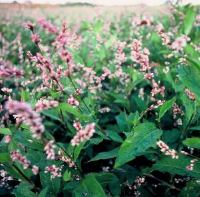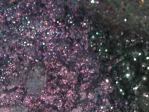|
|
 |
||

|
|
![]()
![]()
|
|
Kosoen has been stubbornly maintaining the traditional Japanese Indigo dyeing method and uses no synthetic indigo at all. The basic raw material is the leaf of the Polygonum Tinctorium (photo on the left). The Japanese process differs from that in other parts of the world in that the leaves are fermented to extract the indigo compound. The plant grows well in the southern part of Japan; nowadays only four main providers manage to maintain their business. Kosoen - located in the western part of Tokyo - directly orders sukumo (fermented Polygonum leaves) from the Tokushima area of Shikoku (one of the 4 main islands of Japan). Using sukumo - composted leaves - doesn't provide any shortcut to the rest of the dyeing process. Compared with other Indigo dyeing methods, the Japanese way requires more sensitive care throughout the process because they have to keep the bacteria alive through the entire dyeing session! The overall procedure is the same at any workshop but each professional dyer has his own particular methods. Now I am going to explaining the process applied at Kosoen. |
|
These pages couldn't have been made without the cooperation of the
Kosoen staff. Thank you to all the staff at Kosoen! |
![]()
![]()

